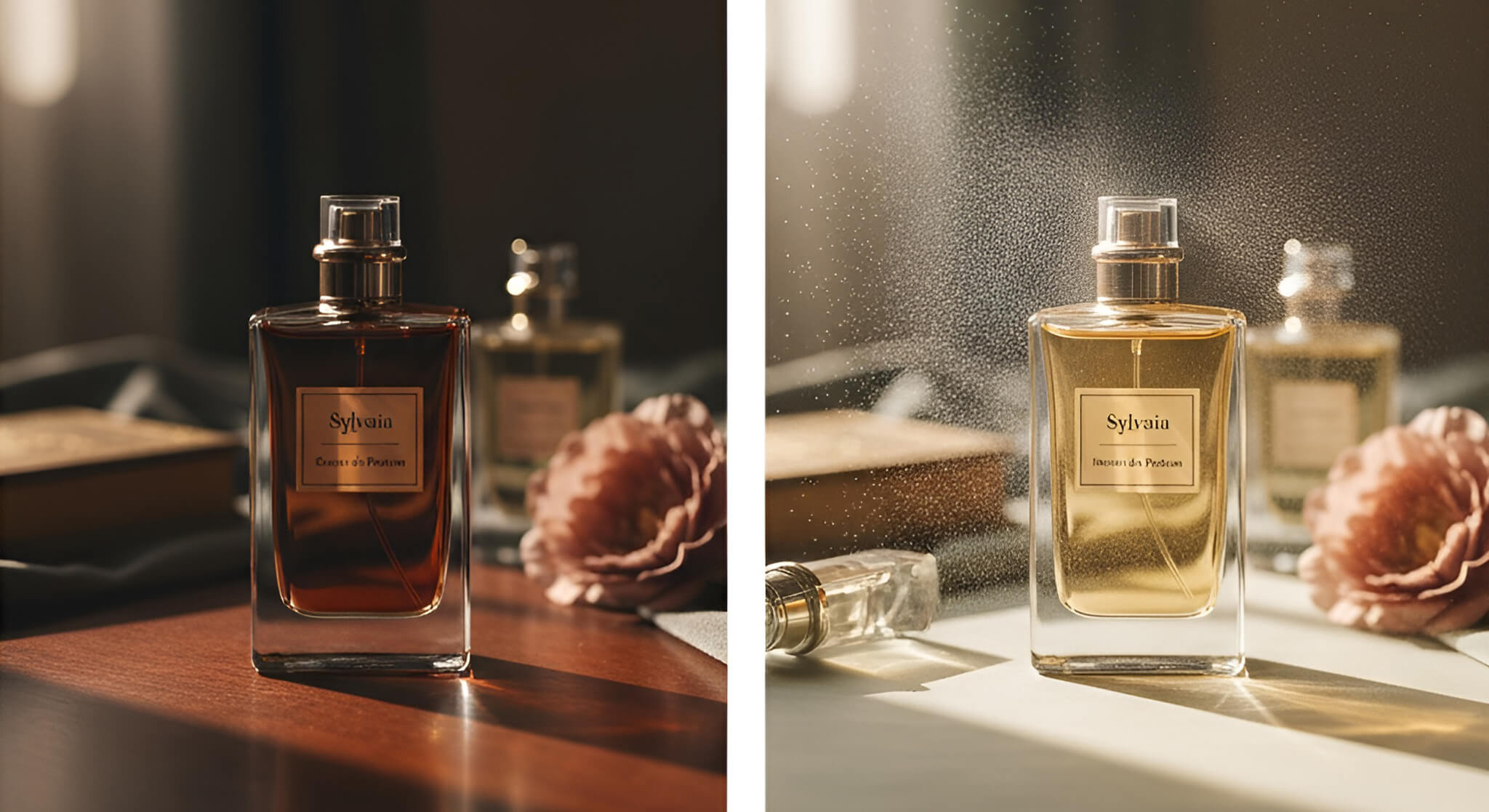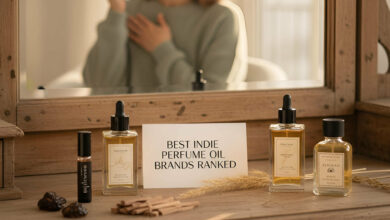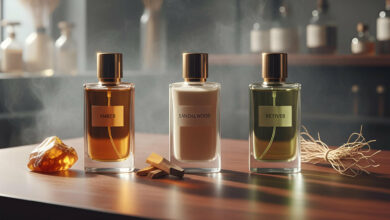Extrait de Parfum vs. Intense EDP: A Comparison of Concentrations
Table of contents
The “Stronger” Scent Dilemma: Decoding the Labels
You’ve fallen in love with a new fragrance. You’re at the counter, ready to purchase, when the sales associate presents you with two enticing options: the luxurious “Extrait de Parfum” and the powerful “Intense Eau de Parfum.” Both promise a richer, longer-lasting experience than the standard EDP, and it’s natural to assume they are just two different terms for the same thing: a “stronger” version of the scent you love.
But is that really true? Are you just paying more for better performance, or is there a bigger, often unstated, difference between these two formats?
We’re revealing a critical distinction that the fragrance industry often leaves unexplained. Understanding the difference between a true concentration upgrade and a creative reinterpretation is the key to choosing the right fragrance and avoiding a costly mistake.
The Contenders: A Technical Definition vs. a Marketing Term
The most important thing to know is that these two terms are not interchangeable. One is a technical classification, while the other is an artistic and marketing term.
Extrait de Parfum (The Technical “Concentration” Upgrade)
This is a regulated, technical classification in perfumery. Extrait de Parfum” (also known as Pure Parfum or simply Parfum) refers to the highest standard concentration of perfume oil, typically between 20% and 40%. The primary change from an EDP is the significantly higher ratio of fragrant oil to alcohol. Its main purpose is to create the longest-lasting, richest possible version of a scent.
“Intense” EDP (The Artistic “Character” Upgrade)
“Intense” (or “Elixir,” “Absolue,” “Le Parfum”) is a marketing term, not a technical one. An “Intense” version is what’s known as a “flanker”—an artistic reinterpretation of the original Eau de Parfum. While the oil concentration might be slightly higher, the more significant change is often to the formula itself. The perfumer might amplify the woody base notes, add a new spicy accord, or use a richer floral absolute to make the scent feel more intense, deeper, or darker in character, which is a key marketing strategy in the fragrance industry to capitalize on a successful original scent.
Comparing the Scent Experience and Performance
The Scent Profile
- Extrait de Parfum: Tends to be a richer, deeper, and smoother version of the exact same scent as its EDP counterpart. The focus is often on the heart and base notes, with a less bright, volatile opening.
- “Intense” EDP: Can be a noticeably different fragrance. It shares the original’s DNA but often goes in a new direction. A fresh floral EDP might have an “Intense” version that is a warm, spicy floral.
The Performance (Longevity vs. Sillage)
- Extrait de Parfum: Has the best possible makeup longevity (scent longevity), often lasting 8-12+ hours on the skin. However, due to the lower alcohol content, its projection (sillage or scent trail) is often softer and more intimate. It creates a personal scent aura.
- “Intense” EDP: Has excellent longevity (typically better than the original EDP). Because it is still an alcohol-based spray designed to project, its sillage is often very powerful and can fill a room. It is designed to be noticed.
The At-a-Glance Comparison Table
| Feature | Extrait de Parfum | “Intense” Eau de Parfum |
| Definition | Technical Term (High Oil %) | Marketing Term (Altered Character) |
| Key Change | Higher Oil Concentration | Often a Changed Formula/Notes |
| Longevity | Highest (8-12+ hrs) | High (6-10+ hrs) |
| Sillage (Scent Trail) | Often Lower / Intimate | Often High / Projecting |
| Scent vs. Original | A richer version of the same scent | Can be a noticeably different scent |
The Verdict: How to Choose Your “Power” Scent
Use this simple guide to make a strategic choice.
- Choose an Extrait de Parfum if: Your number one goal is maximum longevity, and you desire an intimate, luxurious, and true-to-the-original version of a scent you already know and love.
- Choose an “Intense” EDP if: You are looking for a bolder, more powerful, and projecting version of a scent, and you are open to it being a new artistic interpretation of the original.
The Non-Negotiable Rule: Because an “Intense” version is often a different formula, you must test it on your skin, even if you own and love the original. Never assume it’s just a “stronger” version.
The Power of an Educated Choice
The difference between an “Extrait” and an “Intense” EDP is the crucial difference between a change in concentration and a change in character.
This knowledge is your power as a consumer. It removes the guesswork and reduces the anxiety around investing in a high-end fragrance. By understanding what the label is really telling you, you can confidently choose the experience you truly desire—whether it’s an intimate secret or a bold statement.






